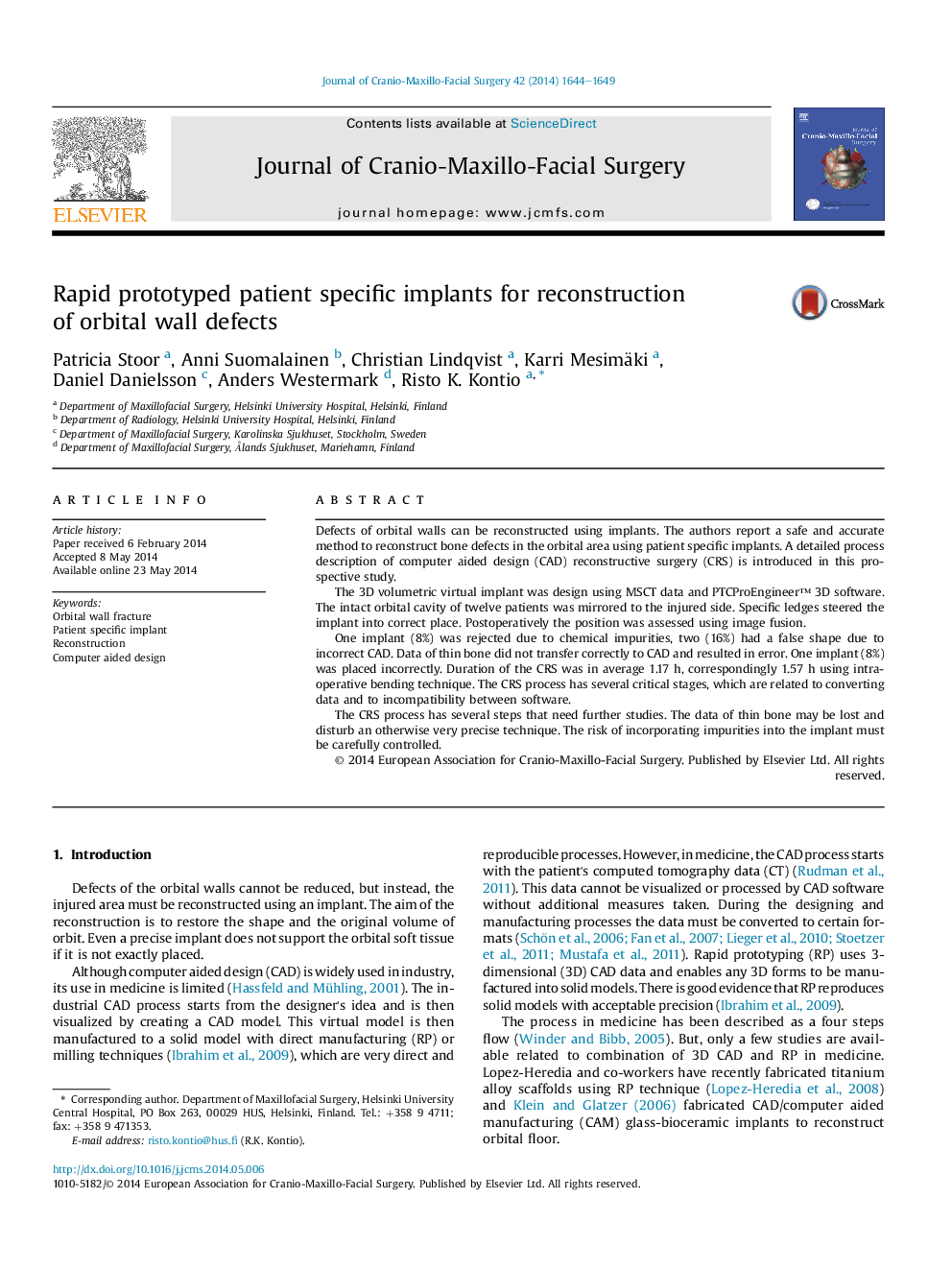| Article ID | Journal | Published Year | Pages | File Type |
|---|---|---|---|---|
| 3142721 | Journal of Cranio-Maxillofacial Surgery | 2014 | 6 Pages |
Defects of orbital walls can be reconstructed using implants. The authors report a safe and accurate method to reconstruct bone defects in the orbital area using patient specific implants. A detailed process description of computer aided design (CAD) reconstructive surgery (CRS) is introduced in this prospective study.The 3D volumetric virtual implant was design using MSCT data and PTCProEngineer™ 3D software. The intact orbital cavity of twelve patients was mirrored to the injured side. Specific ledges steered the implant into correct place. Postoperatively the position was assessed using image fusion.One implant (8%) was rejected due to chemical impurities, two (16%) had a false shape due to incorrect CAD. Data of thin bone did not transfer correctly to CAD and resulted in error. One implant (8%) was placed incorrectly. Duration of the CRS was in average 1.17 h, correspondingly 1.57 h using intraoperative bending technique. The CRS process has several critical stages, which are related to converting data and to incompatibility between software.The CRS process has several steps that need further studies. The data of thin bone may be lost and disturb an otherwise very precise technique. The risk of incorporating impurities into the implant must be carefully controlled.
